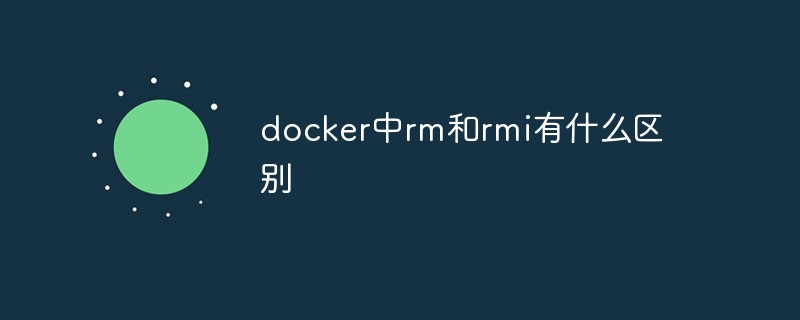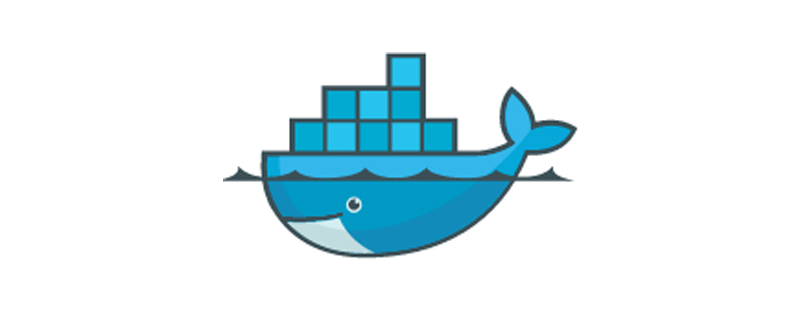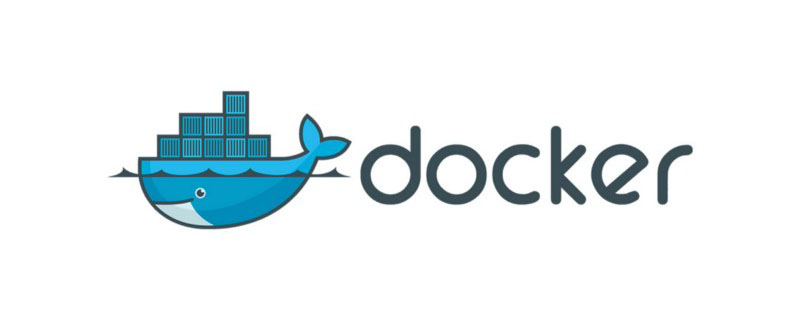 Operation and Maintenance
Operation and Maintenance Linux Operation and Maintenance
Linux Operation and Maintenance How to use Docker to manage and expand multi-node clusters
How to use Docker to manage and expand multi-node clusters
In today's cloud computing era, containerization technology has become one of the most popular technologies in the open source world. The emergence of Docker has made cloud computing more convenient and efficient, and has become an indispensable tool for developers and operation and maintenance personnel. The application of multi-node cluster technology is widely used based on Docker. Through multi-node cluster deployment, we can utilize resources more efficiently, improve reliability and scalability, and also be more flexible in deployment and management. Next, we will introduce how to use Docker to manage and expand multi-node clusters.
Step one: Build a multi-node cluster environment
In order to achieve the management and expansion of a multi-node cluster, we need to build multiple nodes first. In this article we use Docker Swarm technology, which can help us manage multi-node clusters more conveniently.
1) Install Docker and Docker Compose on multiple machines and ensure that they can communicate with each other.
2) Select one of the machines as the "management node" and run the following command:
docker swarm init --advertise-addr <管理节点IP>
After execution, a token will be returned. This token is used to add other nodes to this in Swarm. At the same time, after executing this command, your local machine becomes the management node of Swarm.
3) Add other machines to Swarm. Execute the following command on other machines:
docker swarm join --token <token> <管理节点IP>:2377
At this time, other machines will be added to Swarm. We can use the following command to view the nodes in Swarm:
docker node ls
Step 2: Build the service and expand the capacity
After setting up a multi-node cluster environment, we can start building the service. A service refers to a group of container instances running in Swarm. They share host, network and storage resources and can automatically scale in a horizontal expansion manner. Here, we take a simple web application as an example to introduce how to build and expand services.
1) Write Dockerfile. First, we need to write a Dockerfile file, specify the application's base image and running commands, etc.
FROM node:latest WORKDIR /app COPY . /app RUN npm install CMD ["npm", "start"]
Among them, we chose node:latest as the base image, added our application files to the /app directory, installed dependencies and started the program.
2) Write docker-compose.yml. docker-compose is a tool for defining and running multi-container Docker applications. Here, we can use docker-compose to define a service called web.
version: '3'
services:
web:
build: .
ports:
- "8080:8080"
environment:
- NODE_ENV=production
deploy:
replicas: 5
resources:
limits:
cpus: "0.1"
memory: 50M
restart_policy:
condition: on-failureThis docker-compose file specifies our application building method, port mapping, environment variables, number of copies, resource limits, etc. In step three we will use the docker stack deploy command to build and run the service.
3) Build and expand services. After completing the above two steps, we can start building and scaling our service. Please execute the following command:
docker-compose build docker stack deploy --compose-file docker-compose.yml web
This command will deploy our service into Swarm and specify 5 instances. Visit http://
Step Three: Management and Expansion Service
After successfully building and deploying the service, we need to manage and expand it. Service management and expansion in Swarm is very simple, you only need to execute a few commands.
1) Check the service status. We can use the following command to view the status of the service:
docker service ls docker service ps web
This command will display all running services and service instances. At this point, we should see 5 web service instances running.
2) Expansion service. We can use the following command to expand the number of instances of the service:
docker service scale web=8
This command will increase the number of instances of the web service to 8.
3) Update service. In order to update the service, we need to modify the previous docker-compose.yml file and run the docker stack deploy command again. After the modification is completed, execute the following command to update the service:
docker stack deploy --compose-file docker-compose.yml web
Summary
Multi-node cluster technology is a very practical technology used in Docker, which can help us manage and expand our applications more conveniently . In this article, we introduce how to use Docker Swarm to build a multi-node cluster environment, and use a web application as an example to demonstrate how to build, deploy, manage and expand services. I believe that through the introduction of this article, everyone has a deeper understanding of Docker Swarm multi-node cluster technology.
The above is the detailed content of How to use Docker to manage and expand multi-node clusters. For more information, please follow other related articles on the PHP Chinese website!
 docker中rm和rmi有什么区别Jul 14, 2022 am 11:02 AM
docker中rm和rmi有什么区别Jul 14, 2022 am 11:02 AMdocker中rm和rmi的区别:rm命令用于删除一个或者多个容器,而rmi命令用于删除一个或者多个镜像;rm命令的语法为“docker rm [OPTIONS] CONTAINER [CONTAINER...]”,rmi命令的语法为“docker rmi [OPTIONS] IMAGE [IMAGE...]”。
 docker官方镜像有哪些May 12, 2022 pm 02:23 PM
docker官方镜像有哪些May 12, 2022 pm 02:23 PMdocker官方镜像有:1、nginx,一个高性能的HTTP和反向代理服务;2、alpine,一个面向安全应用的轻量级Linux发行版;3、busybox,一个集成了三百多个常用Linux命令和工具的软件;4、ubuntu;5、PHP等等。
 docker容器重启后数据会丢吗Jun 17, 2022 am 10:41 AM
docker容器重启后数据会丢吗Jun 17, 2022 am 10:41 AMdocker容器重启后数据会丢失的;但是可以利用volume或者“data container”来实现数据持久化,在容器关闭之后可以利用“-v”或者“–volumes-from”重新使用以前的数据,docker也可挂载宿主机磁盘目录,用来永久存储数据。
 docker是免费的吗Jul 08, 2022 am 11:21 AM
docker是免费的吗Jul 08, 2022 am 11:21 AMdocker对于小型企业、个人、教育和非商业开源项目来说是免费的;2021年8月31日,docker宣布“Docker Desktop”将转变“Docker Personal”,将只免费提供给小型企业、个人、教育和非商业开源项目使用,对于其他用例则需要付费订阅。
 docker能安装oracle吗Jul 08, 2022 pm 04:07 PM
docker能安装oracle吗Jul 08, 2022 pm 04:07 PMdocker能安装oracle。安装方法:1、拉取Oracle官方镜像,可以利用“docker images”查看镜像;2、启动容器后利用“docker exec -it oracle11g bash”进入容器,并且编辑环境变量;3、利用“sqlplus /nolog”进入oracle命令行即可。
 docker存储空间不足怎么办Jul 22, 2022 pm 03:44 PM
docker存储空间不足怎么办Jul 22, 2022 pm 03:44 PM解决方法:1、停止docker服务后,利用“rsync -avz /var/lib/docker 大磁盘目录/docker/lib/”将docker迁移到大容量磁盘中;2、编辑“/etc/docker/daemon.json”添加指定参数,将docker的目录迁移绑定;3、重载和重启docker服务即可。
 什么是docker最早支持的存储引擎May 12, 2022 pm 03:27 PM
什么是docker最早支持的存储引擎May 12, 2022 pm 03:27 PMAUFS是docker最早支持的存储引擎。AUFS是一种Union File System,是文件级的存储驱动,是Docker早期用的存储驱动,是Docker18.06版本之前,Ubuntu14.04版本前推荐的,支持xfs、ext4文件。
 docker容器管理ui有哪些May 11, 2022 pm 03:39 PM
docker容器管理ui有哪些May 11, 2022 pm 03:39 PM容器管理ui工具有:1、Portainer,是一个轻量级的基于Web的Docker管理GUI;2、Kitematic,是一个GUI工具,可以更快速、更简单的运行容器;3、LazyDocker,基于终端的一个可视化查询工具;4、DockStation,一款桌面应用程序;5、Docker Desktop,能为Docker设置资源限制,比如内存,CPU,磁盘镜像大小;6、Docui。


Hot AI Tools

Undresser.AI Undress
AI-powered app for creating realistic nude photos

AI Clothes Remover
Online AI tool for removing clothes from photos.

Undress AI Tool
Undress images for free

Clothoff.io
AI clothes remover

AI Hentai Generator
Generate AI Hentai for free.

Hot Article

Hot Tools

SAP NetWeaver Server Adapter for Eclipse
Integrate Eclipse with SAP NetWeaver application server.

MinGW - Minimalist GNU for Windows
This project is in the process of being migrated to osdn.net/projects/mingw, you can continue to follow us there. MinGW: A native Windows port of the GNU Compiler Collection (GCC), freely distributable import libraries and header files for building native Windows applications; includes extensions to the MSVC runtime to support C99 functionality. All MinGW software can run on 64-bit Windows platforms.

VSCode Windows 64-bit Download
A free and powerful IDE editor launched by Microsoft

MantisBT
Mantis is an easy-to-deploy web-based defect tracking tool designed to aid in product defect tracking. It requires PHP, MySQL and a web server. Check out our demo and hosting services.

mPDF
mPDF is a PHP library that can generate PDF files from UTF-8 encoded HTML. The original author, Ian Back, wrote mPDF to output PDF files "on the fly" from his website and handle different languages. It is slower than original scripts like HTML2FPDF and produces larger files when using Unicode fonts, but supports CSS styles etc. and has a lot of enhancements. Supports almost all languages, including RTL (Arabic and Hebrew) and CJK (Chinese, Japanese and Korean). Supports nested block-level elements (such as P, DIV),





